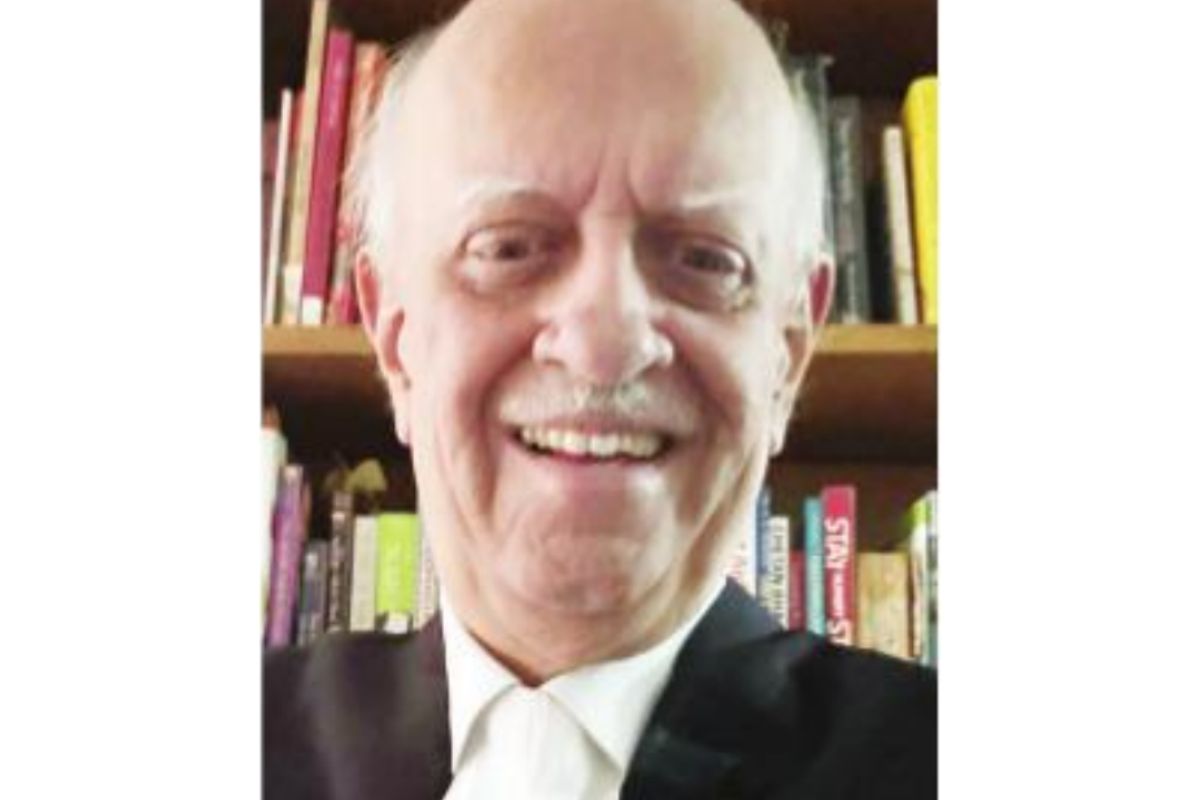Mr. Vijay Panjwani is a senior advocate of the Supreme Court. He represented the Central Pollution Control Board (CPCB) for nearly 28 years – starting with removal of diesel-fuelled public transport buses in the national capital and replacing them with CNG run buses.
Mr. Panjwani assisted the top court starting with “Green” Judge Justice Kuldip Singh in all important environmental related issues including discolouring of the Taj Mahal due to emissions from the Mathura refinery, cleaning of rivers titled ‘And Quiet Flows Dirty Yamuna’, removing pollutants from river Ganga and improving its water quality, preventing untreated sewage flowing into rivers, sewage and waste disposal in the national capital, etc.
Advertisement
Following are excerpts from an interview of Mr Panjwani with Parmod Kumar of The Statesman
Q: You have represented the Central Pollution Control Board before the Supreme Court since February 1995 and assisted the court in all important pollution related matters including air pollution. Looking back, how do you see the outcome of efforts by the top court?
A: The Hon’ble Supreme Court made serious efforts to intervene in cleaning the air in Delhi after official agencies and NGOs failed to do so for one reason or the other. Initially certain chemical contents of the oil, petrol, diesel coming from Mathura refinery were lowered. The highly polluting notorious Red Line public transport of the 90s buses were banned.
The introduction of CNG buses was resisted by the then Delhi government on the grounds of cost and lack of expertise of makeover of a diesel engine to CNG-fuelled one, an increase in passenger fare, absence of fuel stations for storing and dispensing the CNG, etc. However, the efforts of the Supreme Court got a push when the Prime Minister’s office under the late Atal Bihari Vajpayee gave its nod for the changeover to CNG fuel at the earliest.
This was a beginning, and we have covered many areas since then. The prevailing situation on air pollution is distressing, but think of what would have happened if the Supreme Court had not taken up the cudgels.
Q: Toxic air pollution attaining severe proportions is wintercentric. Stubble burning, vehicular emission, fire-crackers and dust particles have been the main sources of the air pollution. Is there a way to curb and contain it?
A: As far as firecrackers are concerned, the ideal solution is completely banning them. But this is not possible and practical. Somewhere over the years bursting of firecrackers have become integral to the festivities from Diwali to Chhat pooja. Even a victory in a sporting event is celebrated with the bursting of crackers.
The firecrackers can only be regulated in terms of quantities, days, time and place of bursting. The regulation has to be strictly enforced by the authorities. Unfortunately, Supreme Court orders have been flouted and disregarded with impunity both by the thousands of crores worth fireworks industry and the public.
The recent Diwali and Chhat pooja are a testimony to this insensitivity, coupled with lack of awareness of the people about the harmful effects of firecrackers on health. The people have to be made aware and educated. The awareness campaign has to be in a mission mode like in the case of harmful effects of smoking and chewing tobacco.
Firecrackers are a real health hazard. A firecracker contains Barium for green colour, Potassium Perchlorate, Sulphur, Magnesium, Aluminium, Brimstone, Titanium Powder, Charcoal and Phosphorus. These chemicals produce sound, colour, explosion, sparks, flares, explosives, and pyrotechnics. Each one of these is poisonous beyond a certain limit and affects eyes, ears, thyroid, lungs, blood quality and movement in the body.
The Petroleum & Explosives Safety Organisation (PESO) is the nodal agency under the Indian Explosives Act that is tasked to protect people, keep them safe and secure and prevent air pollution. Much is desired to be done by the nodal body to curb the production and marketing of the firecracker that does not conform to the Supreme Court directions on firecrackers.
Q: What about dust?
A: Dust management on roads, inside homes and offices needs far-reaching changes more so in the mind-set as well. Half the city suffers from coughing bouts. The fine dust from Rajasthan blows into Delhi on a daily basis. Presently road dust is swept towards its sides routinely. There is no system of collection, transportation, disposal of roadside dust (also called inert dust) that does not react to chemicals and is of no use in any process.
The Delhi Development Authority and the National Capital Region Planning Board are the two agencies sitting quietly on environmental issues for decades. As a consequence, half of the city suffers from coughing and cough bouts.
Q: What about the issue of stubble burning?
A: It is easy to blame farmers engaged in paddy crop cultivation for burning stubble. They have become a whipping boy or villain for the choking air pollution in the national capital. The Supreme Court is keen that its directions to curb and control toxic air are complied with and enforced. But the loud promises made by the government don’t go beyond the newspaper headlines.
In 2022, Union Minister Nitin Gadkari promised to use agri-crop stubble as an input for Highway Road building projects. The Union power minister said that the stubble would be converted into Refuse Derived Fuel (RDF) to be used in thermal power plants. The Environment Ministry supported both ideas. Not a word heard this year – 2023.
The Punjab chief minister Bhagwant Mann said that machines would be made available to farmers for mixing stubble with soil. Not enough has been done. Farmers who cannot even hire the machines are being asked to purchase them. The larger issue is can we stop paddy cultivation and start importing rice?
Q: The effect of the introduction of CNG and the metro rail network has been neutralised/ overwhelmed by an ever-increasing number of vehicles on the road. Do you think electric/battery driven cars and other vehicles would improve the situation in the long run?
A: The present push for battery operated electric cars is impractical. The battery needs charging from electricity. Over a period of time, the demand for electricity for the battery charging stations too would increase. About 75 per cent of the electricity in India comes from coal-based thermal power plants. Any increase in the demand for electricity would automatically add to the burden of the thermal power plants. The thermal power continues to dominate our power scenario as another 80,000 MW is targeted to be produced by 2030. So, shifting smoke emission from cars to thermal power plants is not a very practical idea.
Q: What is the way out?
A: The environment friendly and inexpensive energy source would be Clean Hydrogen Gas. The Government of India has encouraged the private sector to find workable technology to produce clean hydrogen gas to fuel car engines of the future. Second is nuclear energy.
In the prevailing situation, we can take cues from other countries which were faced with similar scenarios. In California, USA due to heavy dependence on cars and the highways, and air pollution increasing on a month-to-month basis, single person occupancy of cars was banned. A car to be driven anywhere must have at least two persons – driver plus one.
California is the largest state of the USA in terms of area. It is crisscrossed by highways. Car driving is taught in school and a person is eligible at the age of 16 to have a driving license. The idea of Odd-Even numbered cars came from California.
Q: Having Hydrogen fuelled cars and other vehicles appears to be a far-fetched solution. As of June 2021, more than 40 000 fuel cell electric vehicles were on the roads across the world with Korea, the United States, China, and Japan having almost 90 per cent of those vehicles. Nuclear cannot be counted as it contributes just 3 per cent of the total power generation in the country.
A: Work is on to develop technologies for hydrogen-fueled car engines. Some big corporates are involved, and it will not take long before we will have it. At times change over to new fuel seems to be faced with glitches but once the technology is there then it does not take long in adopting it.
Q: Why do the well-intended directions/orders of the Supreme court not translate into the desired results?
A: There is an absence of right earnestness and resolution in the implementation of the Supreme Court directions/orders. There is a Commission for Air Quality Management in National Capital Region and Adjoining Areas that was set-up in 2021 in pursuance to a push by the Supreme Court. It has all the stakeholders. But the pollution level of air continues to be toxic, severe and choking.
There is a mindset of status quo, resistance to change and the vested interests which wants to perpetuate the existing regime. However, an effective intervention by the political executive alone would facilitate in finding a lasting solution for clean air that is part of the right to life under Article 21 of the constitution. And this happened in Delhi’s public transport switching over to CNG when the Prime Minister’s Office intervened, and all resistance and objections fizzled out.











